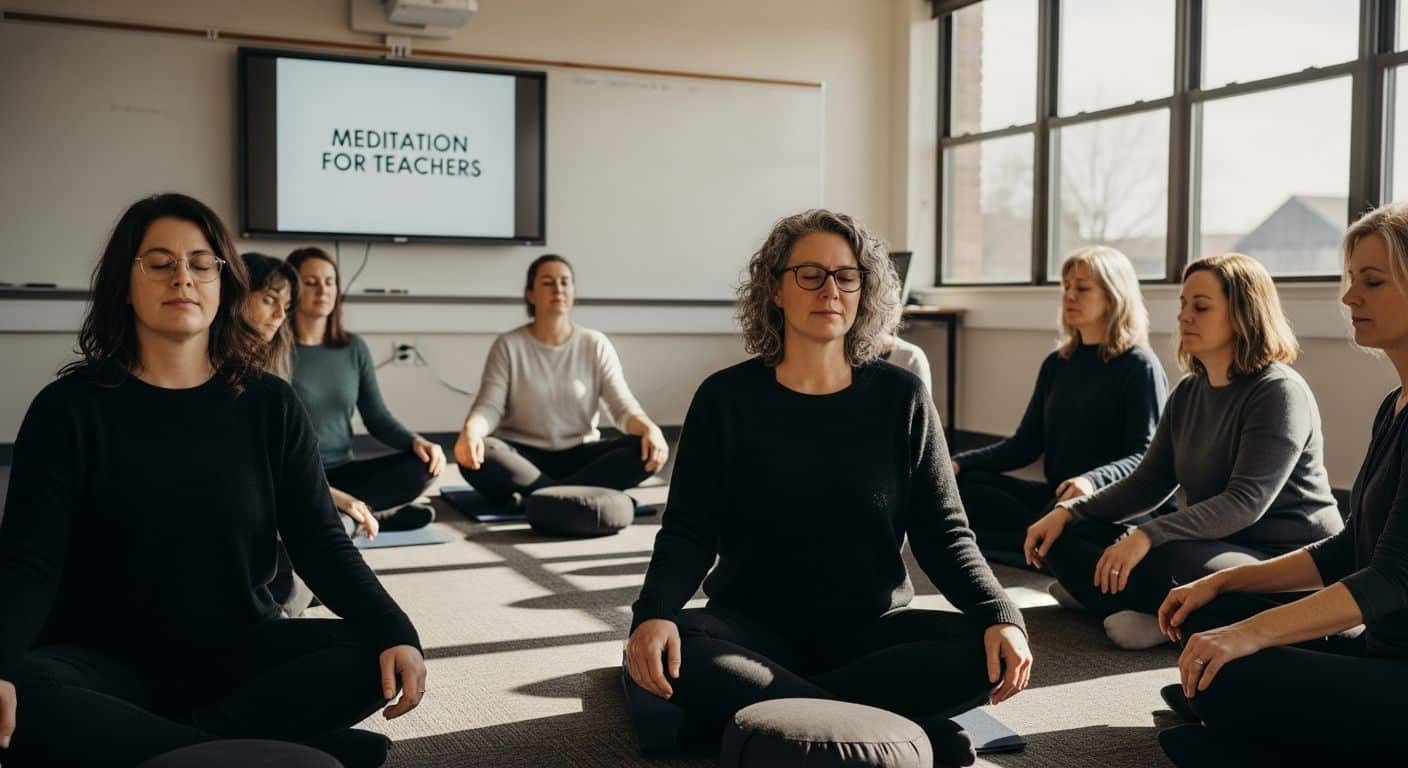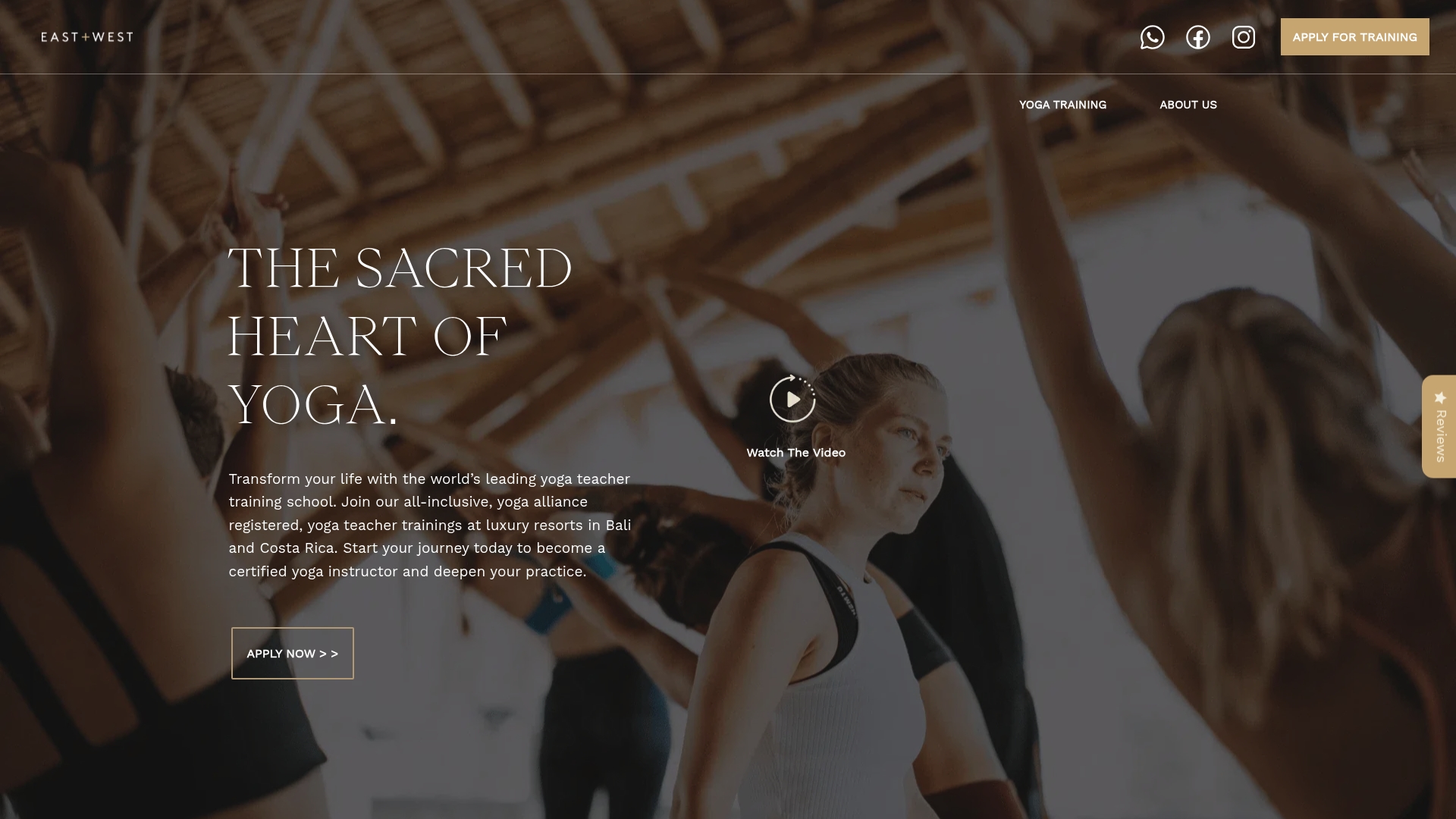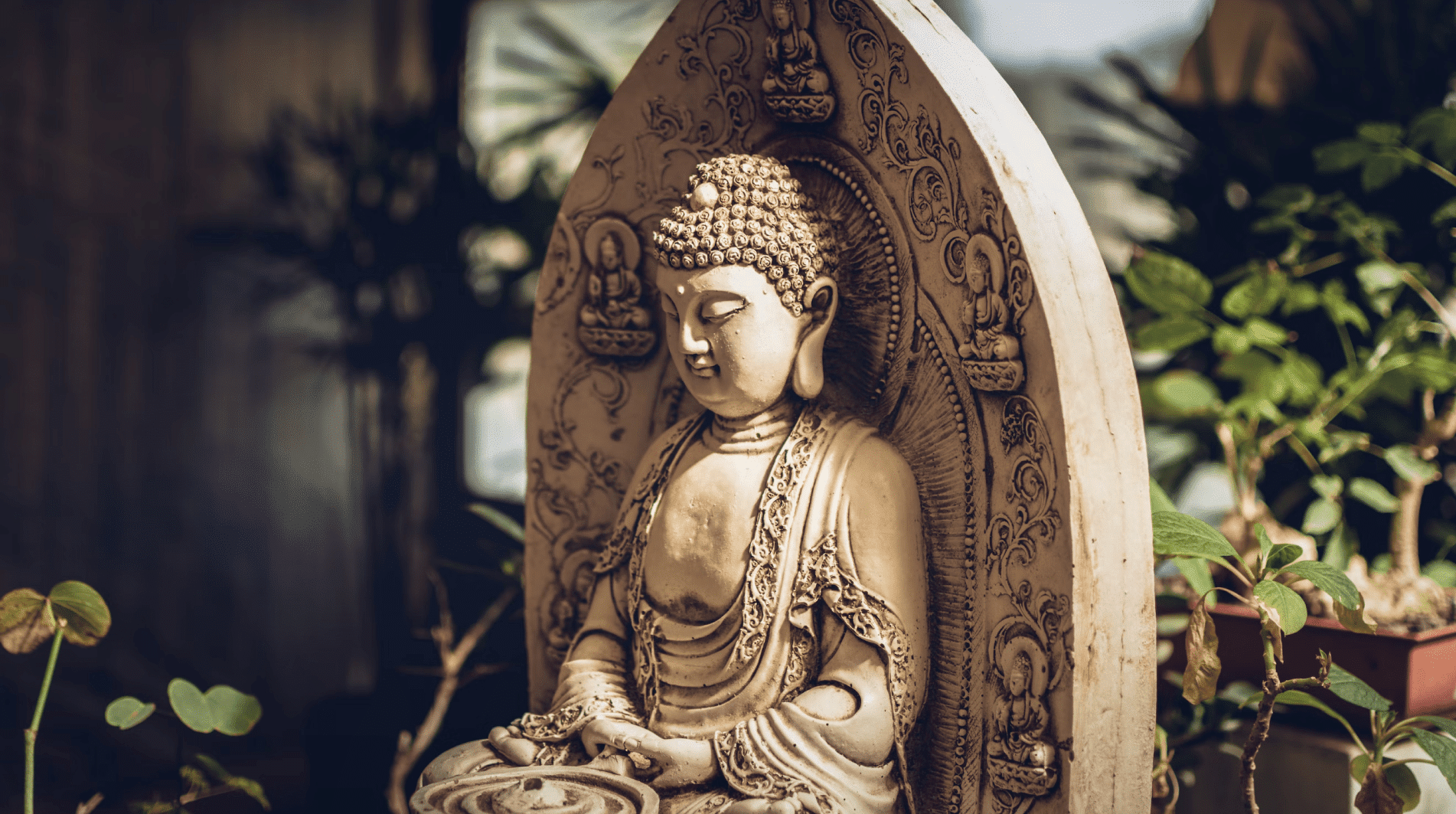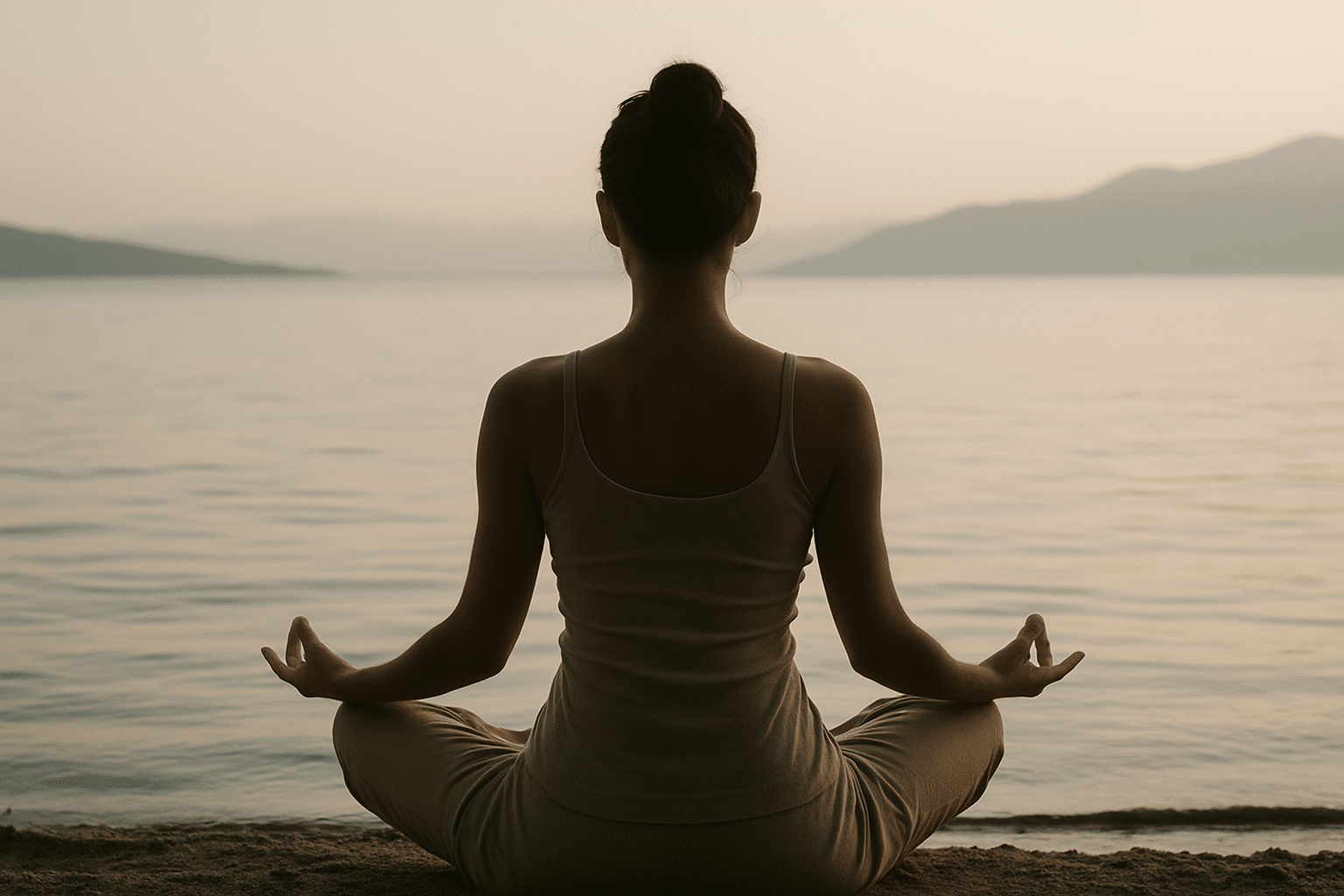
Teaching drains more than just your energy. It quietly chips away at your patience, focus, and even your emotional balance. But here is what might surprise you. Teachers report higher rates of job-related stress than many other professions, and even short daily meditation sessions can create huge shifts in wellbeing. The real shock is this. A simple three-minute breathing break may hold more power to transform your classroom than any lesson plan ever could.
Table of Contents
- Why Meditation Matters For Teachers
- Simple Meditation Techniques For Educators
- Integrating Mindfulness Into The Classroom
- Tips For Aspiring Yoga And Wellness Professionals
Quick Summary
| Takeaway | Explanation |
|---|---|
| Meditation builds professional resilience for teachers. | Regular meditation enhances emotional regulation, stress management, and cognitive function essential for teaching success. |
| Simple breathing techniques are effective tools. | Techniques like box breathing and diaphragmatic breathing can reduce occupational stress and improve focus in classrooms. |
| Mindfulness improves classroom environments. | Structured mindfulness programs can boost student focus, behavior, and emotional intelligence, leading to better learning outcomes. |
| Short daily practices yield significant benefits. | Even brief meditation sessions help teachers develop patience and better classroom management skills over time. |
| Personal growth is vital for wellness professionals. | Continuous personal and professional development in meditation deepens understanding and enhances the ability to support others effectively. |
Why Meditation Matters for Teachers
Teaching is one of the most demanding professions, requiring constant emotional regulation, mental resilience, and sustained focus. Meditation offers teachers a powerful toolkit for managing professional challenges and personal wellbeing. Learn more about professional wellness strategies
The Psychological Toll of Teaching
Educators face unprecedented levels of stress and emotional exhaustion. According to research published in the International Journal of Environmental Research and Public Health, teachers experience significantly higher rates of job-related stress compared to many other professional sectors. The constant pressure of classroom management, administrative responsibilities, student interactions, and performance expectations creates a complex psychological landscape that can lead to burnout.
The daily challenges include managing diverse student needs, maintaining classroom discipline, meeting academic standards, handling administrative paperwork, and navigating interpersonal dynamics with students, parents, and colleagues. These ongoing pressures can generate chronic stress that impacts mental health, job satisfaction, and overall professional effectiveness.
Meditation as a Professional Resilience Strategy
Meditation emerges as a scientifically validated approach for teachers to build psychological resilience and emotional intelligence. Regular meditation practice provides multiple profound benefits that directly address the unique challenges educators face:
- Stress Reduction: Meditation activates the parasympathetic nervous system, counteracting the physiological stress response and promoting relaxation.
- Emotional Regulation: Practitioners develop enhanced ability to manage emotional reactions, maintaining composure in challenging classroom scenarios.
- Enhanced Cognitive Function: Consistent meditation improves concentration, memory, and mental clarity essential for effective teaching.
By integrating meditation into their daily routine, teachers can develop a more balanced, responsive approach to professional challenges. The practice helps create an internal reservoir of calm, enabling educators to respond to stressful situations with greater wisdom, patience, and professional composure.

Moreover, meditation’s benefits extend beyond individual wellness. Teachers who practice meditation often create more supportive, empathetic classroom environments. Their improved emotional regulation and mental clarity translate into more effective communication, better student relationships, and a more positive learning atmosphere.
The scientific community increasingly recognizes meditation as a crucial professional development tool. Research consistently demonstrates its potential to mitigate workplace stress, enhance psychological wellbeing, and improve overall job performance across various professional contexts, with education being a critical sector for such interventions.
Simple Meditation Techniques for Educators
Meditation does not require extensive training or complex practices. Educators can incorporate straightforward techniques into their daily routine that require minimal time and zero specialized equipment. Explore professional meditation training options to further enhance your practice.
Mindful Breathing Practices
Breath serves as a powerful anchor for meditation, offering teachers an immediate pathway to calm and centeredness. According to research published in the International Journal of Environmental Research and Public Health, structured breathing techniques can significantly reduce occupational stress among educators.
Two accessible breathing techniques include:
- Box Breathing: Inhale for four counts, hold for four counts, exhale for four counts, and pause for four counts. This method helps regulate the nervous system and creates immediate mental clarity.
- Diaphragmatic Breathing: Focus on deep belly breaths, expanding the lower abdomen while minimizing chest movement. This technique activates the parasympathetic nervous system, counteracting stress responses.
Quick Classroom Meditation Strategies
Teachers can implement meditation strategies that require minimal disruption to their professional environment. These techniques can be practiced during short breaks, between classes, or during transition periods:
To help educators easily compare meditation strategies suitable for school environments, here’s a table outlining the key features and benefits of each technique discussed:
| Technique | Description | When to Use | Key Benefit |
|---|---|---|---|
| Box Breathing | Inhale, hold, exhale, and pause for four counts each | Anytime stress arises | Immediate mental clarity |
| Diaphragmatic Breathing | Deep belly breaths with focus on abdominal expansion | Start of day, breaks | Activates relaxation response |
| Three-Minute Body Scan | Sequentially relax muscle groups from head to toe | Short breaks, transitions | Releases tension, clears mind |
| Mindful Moment | Deliberate, conscious breaths with present-moment focus | Before class, after challenges | Reduces anxiety, recenters |
- Three-Minute Body Scan: Close eyes, systematically relax muscle groups from head to toe, releasing physical tension and mental clutter.
- Mindful Moment: Take deliberate, conscious breaths while focusing attention on the present moment, releasing upcoming lesson anxieties or previous classroom challenges.
Implementing these techniques requires consistent practice and intentional commitment. Even short, regular meditation sessions can create substantial shifts in mental resilience, emotional regulation, and overall professional effectiveness. Teachers who develop a meditation practice often report increased patience, improved classroom management skills, and a more balanced approach to daily educational challenges.
Integrating Mindfulness Into the Classroom
Transforming the classroom environment through mindfulness requires intentional strategies and a holistic approach. Explore professional mindfulness techniques to enhance your educational practice.
Structured Mindfulness Approaches
Integrating mindfulness into educational settings goes beyond occasional relaxation exercises. According to research in Time Magazine, systematic mindfulness programs can significantly improve student focus, behavior, and emotional intelligence.
Effective classroom mindfulness strategies include:
- Morning Mindful Check-In: Begin class with a 3-5 minute guided breathing or reflection exercise, helping students transition into learning mode.
- Transition Moment Meditation: Use brief 1-2 minute mindfulness breaks between subjects to reset student attention and emotional state.
- Emotional Awareness Practice: Teach students to recognize and name their emotions, developing greater self-regulation skills.
Academic and Social Benefits
Research published in Developmental Psychology revealed remarkable outcomes from mindfulness integration. Students participating in structured mindfulness programs demonstrated significant improvements:
The following table summarizes the notable academic and social benefits seen in students when mindfulness is integrated into the classroom, based on research findings cited in the article:
| Benefit Type | Outcome | Improvement Percentage |
|---|---|---|
| Academic Performance | Math performance | +15% |
| Social Behavior | Positive social behaviors | +24% |
| Classroom Environment | Reduction in classroom aggression | -24% |
- 15% enhancement in math performance
- 24% increase in positive social behaviors
- 24% reduction in classroom aggression
These findings underscore mindfulness not just as a stress management tool, but as a comprehensive approach to enhancing learning environments. By teaching students to be present, self-aware, and emotionally intelligent, educators create classrooms that support both academic achievement and personal growth.

Practical Implementation Strategies
Successful mindfulness integration requires consistent, age-appropriate approaches. Elementary classrooms might use storytelling and movement-based mindfulness, while secondary students could engage in more reflective and meditation-focused practices.
Key implementation considerations include:
- Start with short, engaging sessions (2-5 minutes)
- Use developmentally appropriate language
- Model mindfulness practices personally
- Create a non-judgmental, exploratory learning atmosphere
- Adapt techniques to match student energy and classroom dynamics
Teachers committed to mindfulness education recognize it as a powerful tool for holistic student development. By nurturing students’ inner resources of attention, compassion, and self-awareness, educators prepare learners not just academically, but for lifelong emotional resilience and interpersonal success.
Tips for Aspiring Yoga and Wellness Professionals
Entering the yoga and wellness profession requires more than technical skills. It demands a holistic approach to personal growth, professional development, and authentic practice. Discover advanced career strategies for yoga instructors to elevate your professional journey.
Developing a Personal Meditation Practice
Successful yoga and wellness professionals understand that personal transformation precedes professional expertise. According to Cornell Health, developing a consistent meditation practice can improve memory, attention, focus, and overall energy levels.
Key personal practice recommendations include:
- Daily Meditation Commitment: Establish a non-negotiable daily meditation routine, starting with 10-15 minutes and gradually increasing duration.
- Diverse Meditation Techniques: Explore various meditation styles such as mindfulness, loving-kindness, transcendental, and body scan to understand different approaches.
- Self-Reflection Journaling: Document meditation experiences, insights, and personal growth to deepen understanding and track progress.
Professional Development Strategies
Research on mindfulness programs highlights the importance of continuous learning and professional enhancement. Aspiring wellness professionals should focus on comprehensive skill development beyond physical techniques.
Critical professional growth areas include:
- Continuing Education: Attend workshops, certification programs, and advanced training to expand knowledge and credentials.
- Specialization: Consider focusing on specific areas like stress management, workplace wellness, or educational mindfulness.
- Professional Networking: Connect with experienced practitioners, join professional associations, and participate in wellness community events.
Ethical and Holistic Professional Approach
Beyond technical skills, successful yoga and wellness professionals embody a holistic philosophy that integrates personal practice with professional service. This approach requires:
- Maintaining authentic, compassionate communication
- Developing strong boundaries and professional ethics
- Continuously working on personal growth and self-awareness
- Adapting techniques to diverse client needs
- Demonstrating cultural sensitivity and inclusive teaching methods
The most effective wellness professionals recognize that their work is not just a career but a calling. They approach their profession with dedication, empathy, and a commitment to supporting others’ physical, mental, and emotional well-being. By cultivating a deep personal practice, pursuing continuous learning, and maintaining high ethical standards, aspiring yoga and wellness professionals can create meaningful, transformative careers that positively impact individuals and communities.
Frequently Asked Questions
What are the benefits of meditation for teachers?
Meditation helps teachers manage stress, enhance emotional regulation, and improve cognitive functions, leading to better classroom management and improved student relationships.
How can teachers integrate meditation into their daily routines?
Teachers can incorporate simple techniques such as mindful breathing, box breathing, or short meditation breaks throughout the day to rejuvenate and refocus.
What are some effective meditation techniques for educators?
Effective techniques include box breathing, diaphragmatic breathing, three-minute body scans, and mindful moments, which can be practiced during breaks or transitions in the classroom.
How does mindfulness impact student behavior and academic performance?
Structured mindfulness programs in classrooms have shown significant improvements in student focus, positive social behaviors, and academic performance, leading to a more supportive and effective learning environment.
Ready to Transform Your Teaching and Wellbeing?
Every day, teachers face emotional exhaustion and overwhelming stress. If you are looking for practical solutions to boost classroom resilience and personal peace, you already know from this article that meditation can bring real change. Imagine building not just your calm but also the confidence to guide others. Yoga East West offers immersive yoga teacher training programs designed to help educators like you master meditation and mindfulness. You will join expert instructors, learn holistic techniques, and foster habits that ease stress and support professional growth. Explore how Yoga East West can move you beyond basic breathing exercises and empower you with transformative, classroom-ready mindfulness skills.

Reconnect with your passion for teaching and develop tools that support both you and your students. Start your journey now by visiting Yoga East West to learn more. If you are ready to deepen your meditation practice and bring lasting benefits to your career, discover your next step and apply for a life-changing training experience today.
















